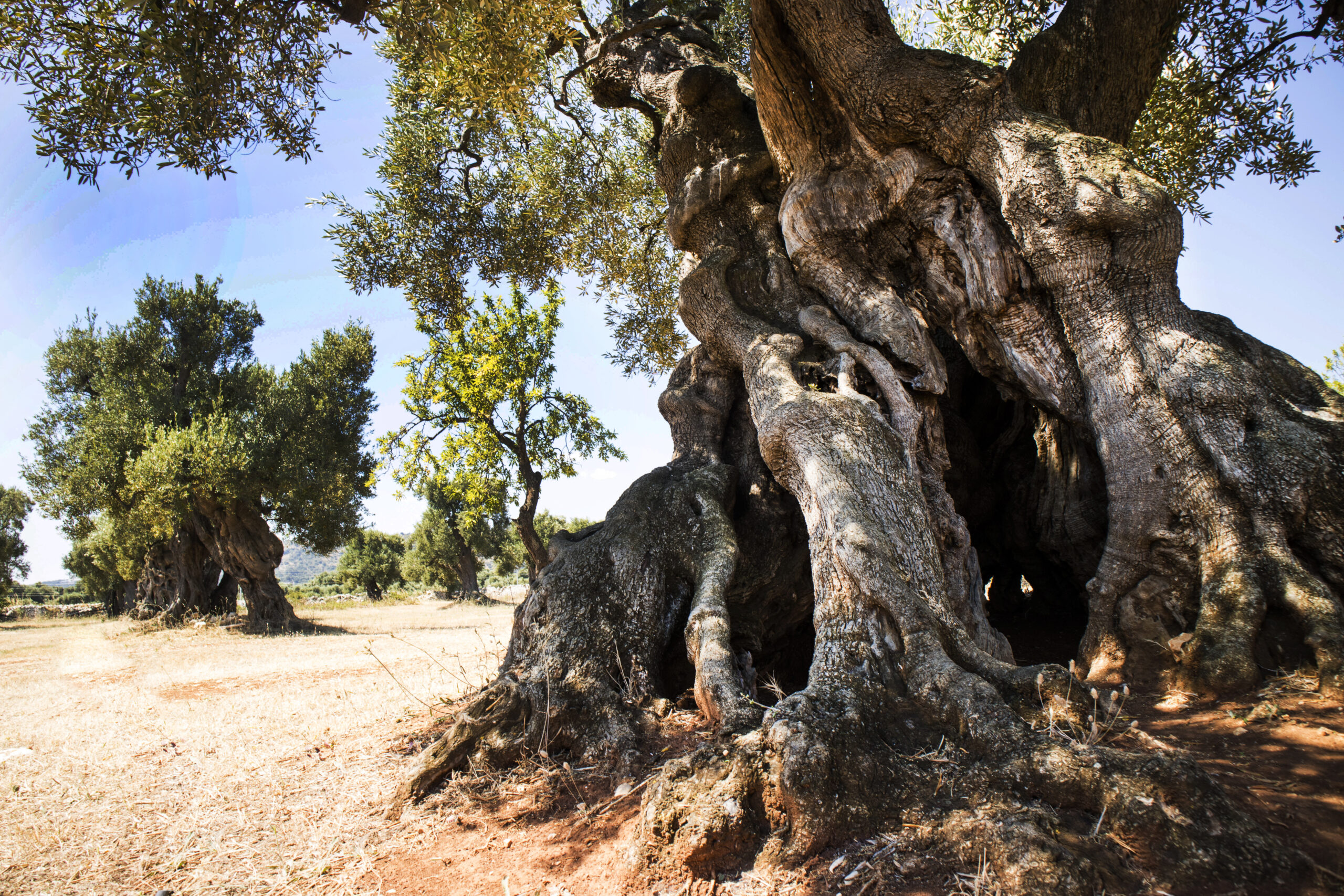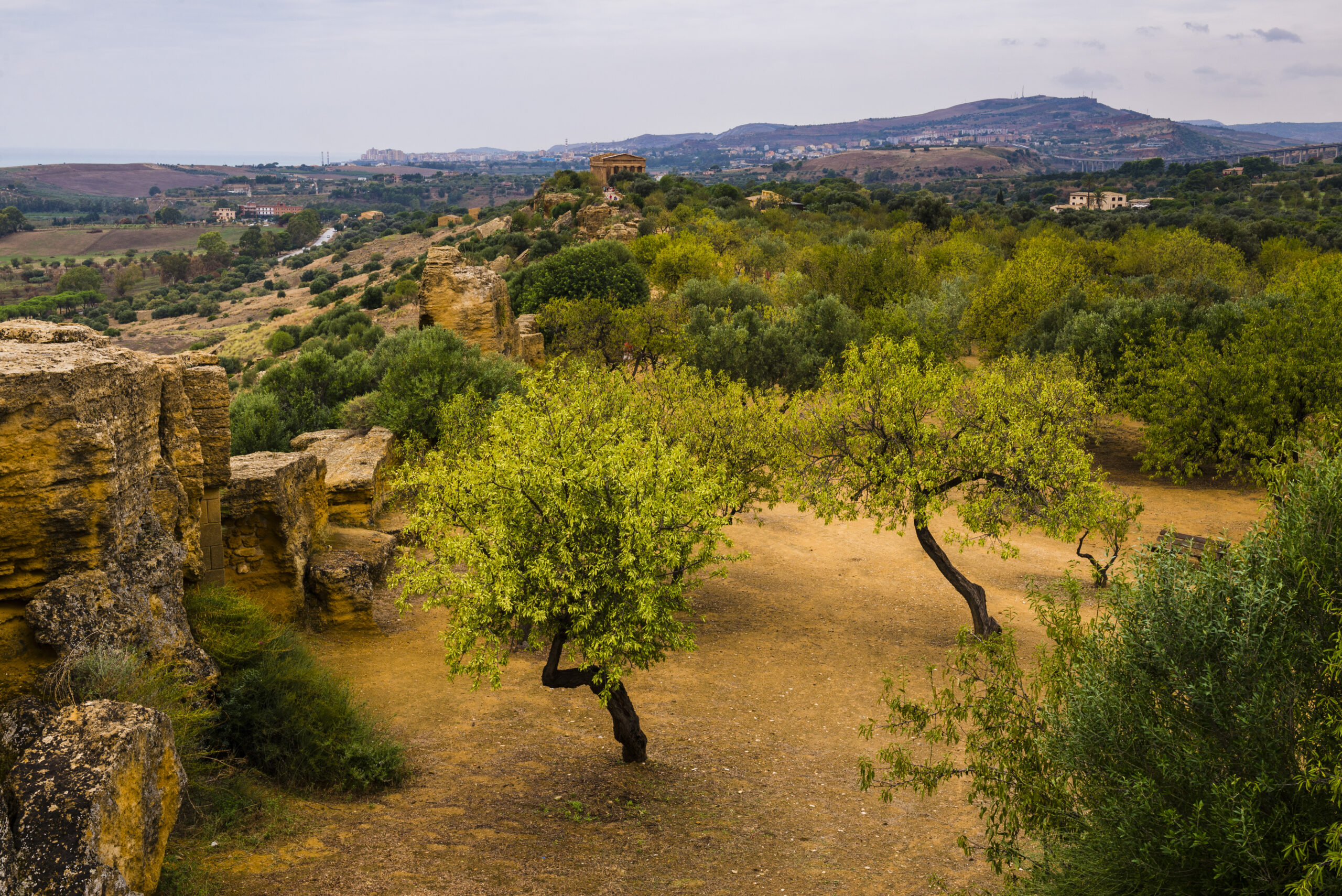TERRITORY
CENTURIES-OLD OLIVE GROVES BETWEEN THE VALLEY OF THE TEMPLES AND THE MEDITERRANEAN COASTS
The territory of Agrigento, located in the south-west of Sicily, is particularly suited to the cultivation of olives, thanks to a combination of natural, historical and cultural factors that make it ideal for this agricultural activity. The presence of olives in this area dates back to ancient times, already during the Greek era, when the city of Akragas (ancient Agrigento) was an important commercial and agricultural center. The Greeks, who recognized the value of the olive tree as a symbol of prosperity and as a source of nourishment, began to cultivate it intensively in the surrounding lands, between the acropolis and the sea.
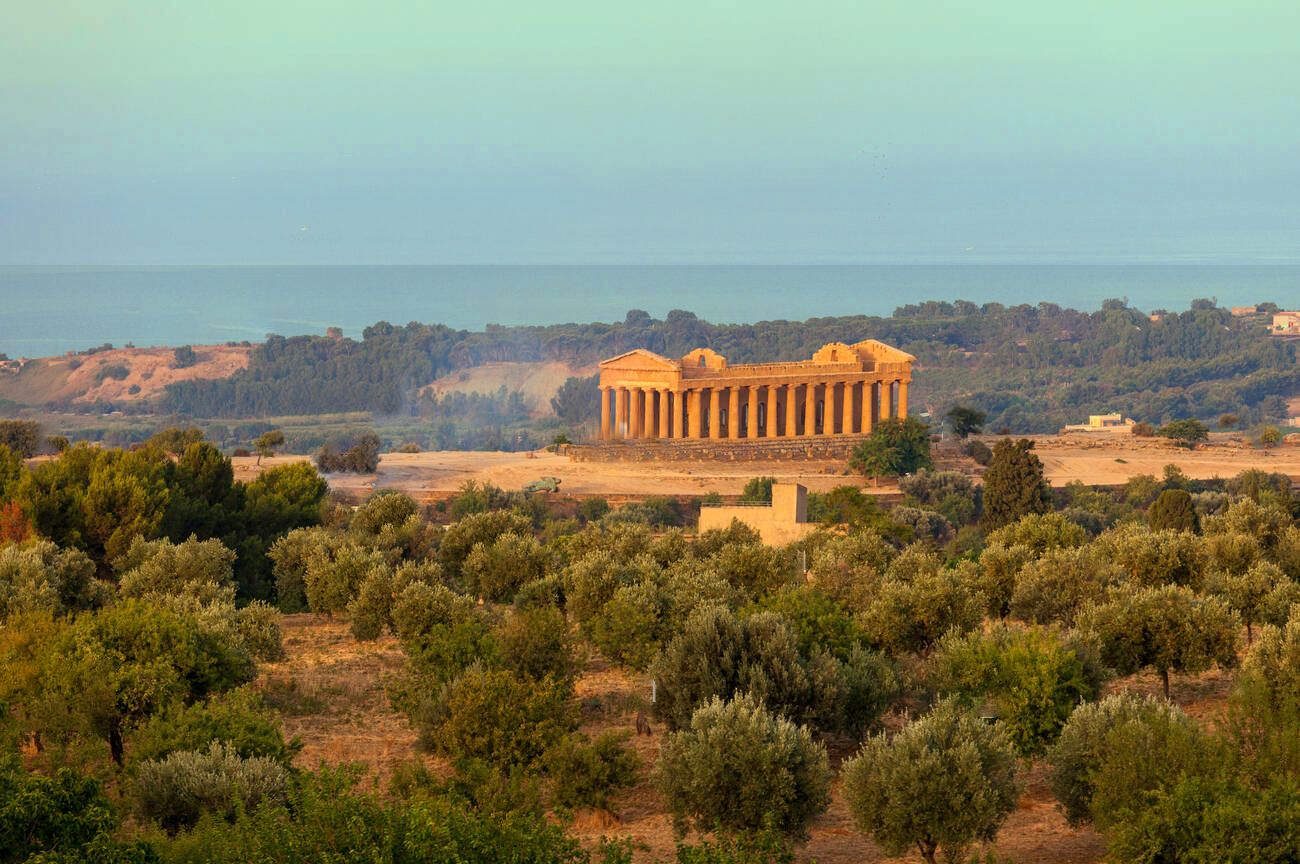
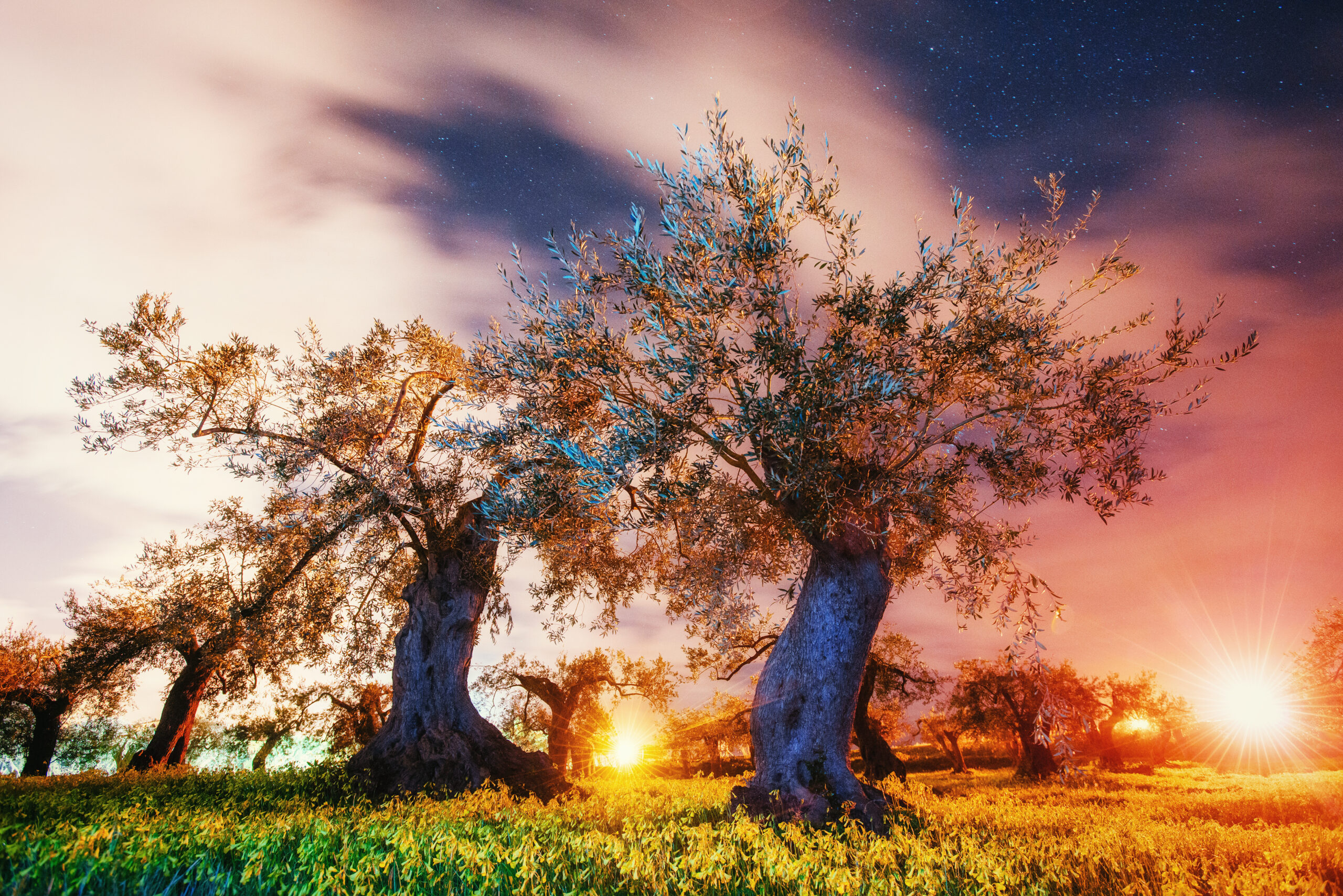
Mediterranean climate
Agrigento enjoys a typical Mediterranean climate, with hot, dry summers and mild, rainy winters. This type of climate is ideal for the olive tree, a plant that prefers moderate temperatures and good exposure to the sun.
Fertile and drained soil
The soils of Agrigento, resulting from the fusion of clay and limestone, are rich in minerals and well drained, which prevents water stagnation harmful to the olive tree. The composition of the soil allows the olive tree to root deeply and draw nourishment for healthy and long-lasting growth.
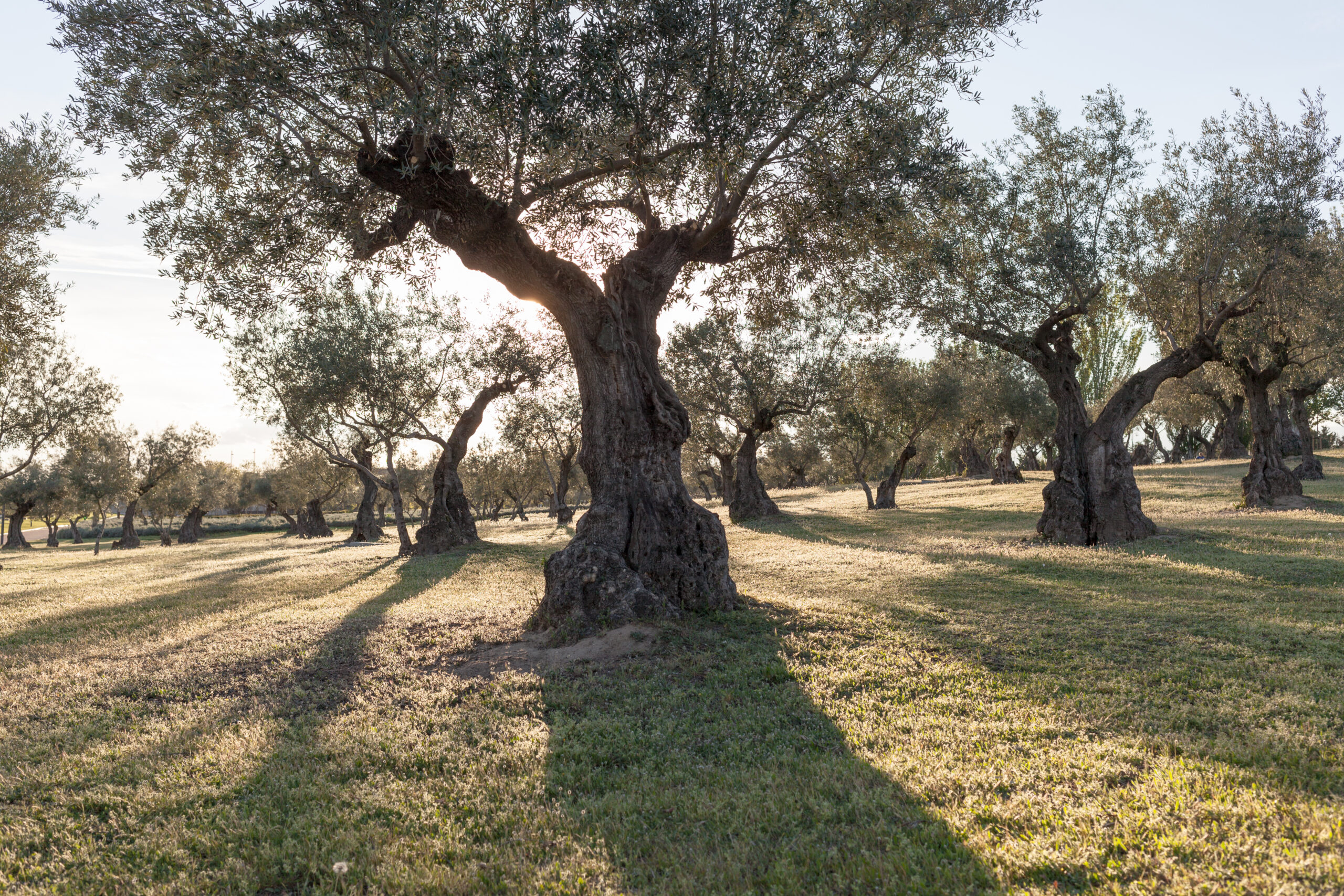
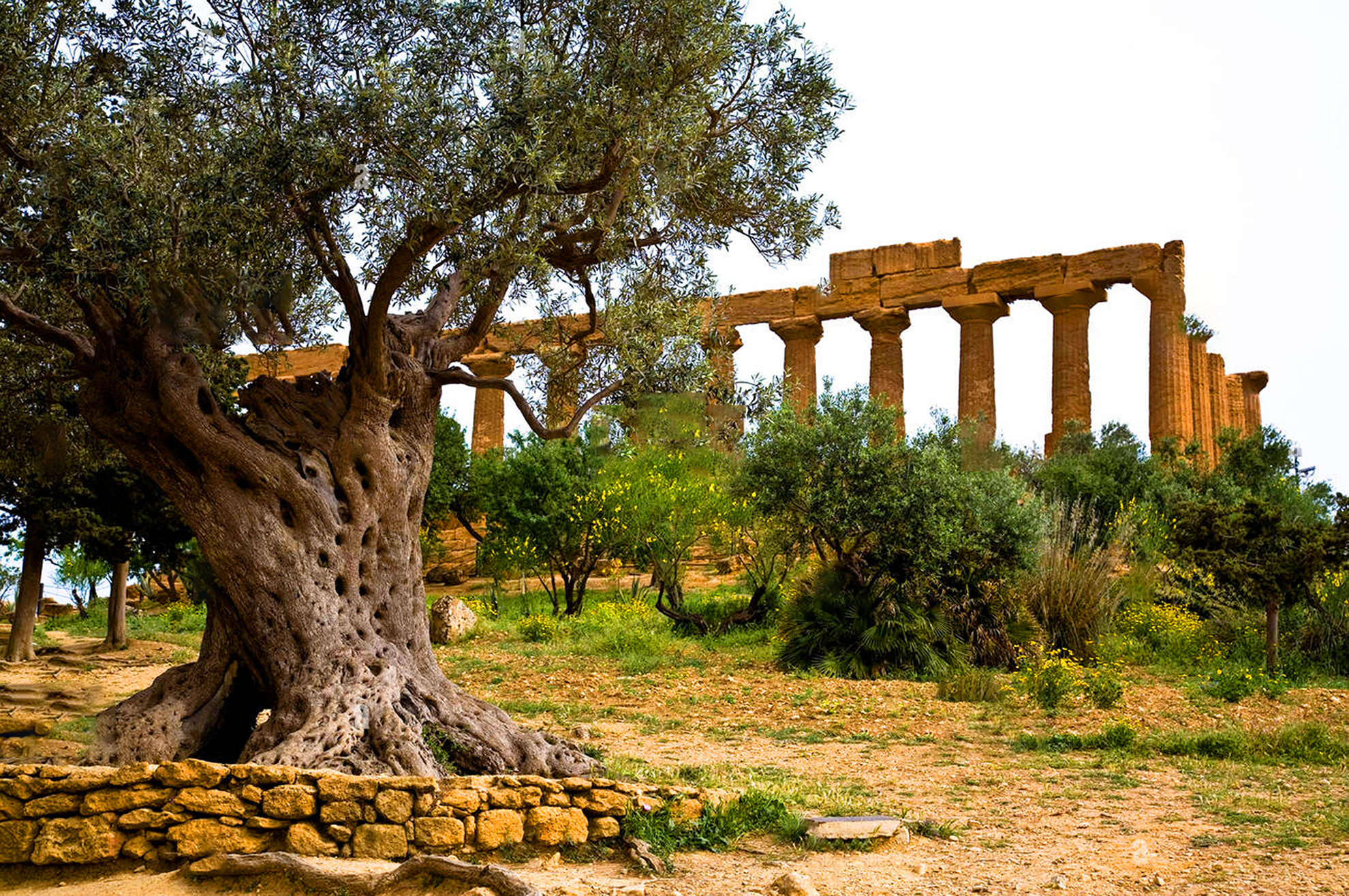
Geographical position
The Valley of the Temples, one of the most important archaeological sites in the world, is located in a context that offers a panoramic view of the coast and the surrounding hills. The olive trees that grow in this area adapt perfectly to the hilly terrain and sunny areas and enjoy the sea breeze that characterizes this territory.
Millenary tradition
The olive tree has always been an integral part of the Agrigento culture and agriculture. In addition to its cultivation, the olive tree represents a symbol of historical and cultural identity. Famous Sicilian writers, including Luigi Pirandello, Leonardo Sciascia, Salvatore Quasimodo and Andrea Camilleri, have described the beauty of these centuries-old olive groves, testifying to the long tradition that binds the Sicilian people to this plant. In particular, the centuries-old olive trees in the area, with their twisted and imposing trunks, are witnesses to a cultivation that has been handed down from generation to generation.
